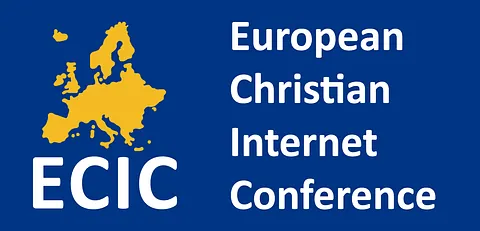Articles
Shaped by our Tools: Effects of Modern Media
Submitted by Marjukka Laiho on Fri, 07/05/2013 - 22:04
Ciarán McMahon described to ECIC participants some features of cyberspace, as well as its effects on the human mind. A key message of the lecture was to highlight the virtual reality as a unique operational context rather than as a mediated fantasy land. Cyberspace was described as a reality with its own inherent rules and characteristics. This all is shaping who we are as humans both online and offline, face-to-face. The person you are online is not necessarily the same as you are offline.
Online context is different from offline context
The web has become more a space than a connection of computers, McMahon emphasised. Thus, we can perceive it as a space of telepresence. Also web developers and designers want to hide its function as a mediator. Online is not secondary to offline but parallel to it. It is more and more an operational environment in itself, thus we need to understand its inherent features.
Some key notions about the online context that make it different from the offline are:
- Online context lacks the respect of authority. Real life is structured by laws, and on the playground the biggest kid gets the power. This doesn’t work online.
- The online communication rarely includes the physical appearance and gestures of a person (despite the video). This makes the perceiving of messages sometimes difficult. For example consider trying (and failing) with sarcasm in a text message.
- Emotions are stronger when messages are processed in an individual’s head without a shared experience in a certain place and time. When using the web, we all are in different contexts as individuals. Also mistakes easily appear without the context.
- The time is not the same in cyberspace as in real life. In cyberspace you can control the time. Everything seems to be temporary but everything also has a delay. It even enables conscious acts of disturbing the time and place perceiving, like scheduling a delayed sending of edited emails.
Cyberspace also challenges the dominance of language. Pictures and feelings become as important means of communication as words. This widens our thinking and perceiving of life. The latest millennia of our culture have been bound to words and text, but this is now being challenged, resulting in a significant cultural turn!
People act differently online and offline
People are different online than in real life. We adapt to every context and act differently online. This is a double-edged sword, with the following consequences:
Positive things happen:
- It’s easier to share online. We tend to become more open.
- It’s easier to build social relations.
- We are more generous online.
Negative things happen:
- The feeling of anonymity increases. It is easy to use a false personality online. Thus, crime is easier.
- There’s a tendency towards impatience, when we don’t get a reply immediately.
- Online expression has become very emotional, often aggressive. We seem to apply different means of communicating unpleasant things. It is often easier to write rather than to speak in such instances. It’s easier to be rude in writing than face-to-face.
All in all, we are not the same and we don’t act the same in online and offline realities. These contexts highlight different things in our personality, both positive and negative. Can we get used to this?
Affected by the fantasy land?
In the beginning the internet was, can, and may still be treated as a game - as if it wasn’t for real. But it is! It’s not a fantasyland where we can freely develop an online personality.
Still, it’s easy to perceive cyberspace as a society of imagination. We start imagining how the person online looks, sounds, and acts. It’s like reading a book and imagining what the characters look like. It’s called solipsistic introjection: you fill in the character and create a hyperpersonality. The difference to reading books is that these people are for real – and they are not responsible for your introjections.
Cyberspace is a bit like our inner space. When we are online, we are not quite the same person as we are in acting the real life. But we are not the products of imagination either. We’re something in between, something different, and still very real.
Could you do it?
No matter how we perceive the cyberspace, we are anyways affected by being online all the time. How does it affect us and our children?
Try the marshmallow test on yourself, but not with a marshmallow, with your mobile device.
Can you stay 2 minutes without touching it? http://www.youtube.com/watch?v=QX_oy9614HQ
Written by
Marjukka Laiho, Mikaela Lax, Sami Kallioinen
Church Information Centre, Finland
Is Social Media guided by the Common Sense?
Submitted by Marjukka Laiho on Fri, 07/05/2013 - 21:53

The workshop on Ethics in Social Media gathered together on a sunny Wednesday afternoon in Dublin. Ralf Peter Reimann, the facilitator of the workshop came up with three relevant topics of discussion, which the group commented on and prioritized, subsequently adding a fourth one. (Votes In quantity.)
- Data security & data protection (I)
- Private/public or private/personal/public (IIII)
- Social ”value” of a person or measurement (III)
- Interaction in social media, social media guideline (III)
It seemed that the questions on private/public were mostly important for the participants. Thus, the group shared experiences and good practices of how this issue has been managed. In the end the consensus was that as there are many kinds of people, there are also many ways to deal with the public/private issues. No one solution can be determined as a good practice as everyone has the freedom to draw their own line.
A third category of personal was also established. Many people thought that the personal can be shared online, and it is even necessary as you can’t hide yourself or control your online personality. Then again, the private is often hidden.
A suggestion in looking at where to draw the line is to consider if a person would to write in a newspaper the things they post on Facebook. Other suggestions offered were to use common sense and talk with people; ask the others involved how they would like to be treated online; and discuss where each and everyone wants to draw the line. This led the group explore the concept of the golden rule, that “one should treat others as one would like others to treat oneself”. Actually the rule ought to be that “one should treat others as they want to be treated”. Thus, there is no common idea of the common sense. We all see things a bit differently based on our own experience and personality. We all draw the line a bit differently and thus, deciding to use common sense is a shady decision because it means different things to each and everyone.
Could there still be a common Christian voice that has a solid base, and is both recognized and needed?
The social media seems to be a place of measuring the value of a person, even more so for young people. It is also an environment where it is easy to laugh at unfortunate coincidences and funny stories of others. It is so easy to make mistakes in social media, and hard to correct them. Words can be misunderstood and messages can be taken out of their intended context. Often this discussion needs the voice of mercy, the voice most inherent to Christianity.
This doesn’t mean that we need to start to ‘pretend’ when we’re online. One doesn’t have to be more than human. It’s not possible to build an image of even a saint online! But one can choose many things. One can choose to be the voice of mercy. We can choose to highlight empathy and mercy. To be polite and mindful online can be even just a simple click. Yes, I LIKE your sayings. Yes, I LIKE you. Therefore, in conclusion social media offers an excellent opportunity to welcome new users and reach out to those with fewer friends, while offering an alternative to the gossip culture which frequently dominates these platforms.
Marjukka Laiho, The Evangelical Lutheran Church of Finland
My Story - Blogging Church President
Submitted by Vlada Wahlstén on Fri, 06/14/2013 - 08:59

Peter Reimann told us a story - about their blogging president of the Reformed (United) Rhineland, from Germany. He presented his sotry in a Tublr blogpost, which was really nice concerning this occasion. (http://ralpe.tumblr.com/post/52208764687/a-blogging-bishop-a-tumblr-blog...)
The very first and important statement was that bishop or church president must engage in Social Media activities.
- Luckily our new bishop asked what he should do with social media, Peter told us.
However it is not easy to advice newly elected bishop on a social media strategy. The first thing in social media is that you must be there authentic. So as they got new church president, they had to find social media that will fit the needs and talents of their president. Should it be Facebook fanpage or blog? Bavarian bishop Heinrich Bedford-Strohm from the Lutheran church has a fanpage: https://www.facebook.com/landesbischof.
Reimann told how in the UK bishop Nick Baines had set a good example: http://nickbaines.wordpress.com/2013/05/26/signals-timing-changed-2/
Blog was elected as the most appropriate social media because you can easily integrate text, photo, video etc. and it can be integrated into other website. Blog can also have multiple authors. So the solution was to combine a blog of the Church Board and the President: http://praesesblog.ekir.de.
The best thing about blogging is that the Church President becomes accessible. He writes the blog himself and that is interesting for the followers.
It is significant that an average visitor click on five different articles (more than 270 visitors per day). The blog is shared in other social media such as Facebook. The blog has existed only two month now. It takes longer time to get the blog well known.
Reimann left some open questions for the future: who is the target audience of the blog? And where the blog is leading?
Keep calm and innovate on!
Submitted by Patrick Muldoon on Tue, 06/11/2013 - 19:31
We were privileged to have had Heidi Campbell, Associate Professor at the Department of Communication at Texas A&M University as the keynote speaker at ECIC in Dublin 2013. On Friday Heidi presented to us her final reflections on our days together for the conference. She described how much the Digital Landscape has changed in recent years, evolving more and more towards the mobile revolution and use of smart phones. The persuasiveness of the technology we use is very clear and we have become active engagers in ‘citizen journalism’, indicative of the nature of present landscape and how we produce content. Even if we chose not to be actively present we can’t opt out of the landscape, as content and images are still generated about us regardless of whether we choose to participate or not. Therefore we need to be active participators and think through our methods and strategies.
Heidi outlined how the Internet is a platform for highlighting debates and biases. The discussion of religion online generates many respectful and different opinions. It allows us to present many responses and offer different positions. It also gives us an opportunity to rethink how we communicate as Church and challenges us to consider how we can balance the presentation of the e-Church within the theological and structural boundaries of the institution and the necessity for pastoral ministry in an offline context.
Heidi discussed how the online digital environment presents an opportunity for developing new religious practices. She referred to the five characteristics for Networked Religion (Convergent Practice, Multi‐site Reality, Networked Community, Storied Identity, Shifting Authority); which she outlined in the opening keynote address and reiterated the tensions and challenges which apply to these characteristics. She reminded us of how we need to think through the challenges of engaging in the online environment. She explained how the screening of web services can be facilitated with users of websites and illustrated how the presentation of religious identity online can enhance of the image of the Church in the digital landscape, for example Bishops making use of Twitter. Heidi described how Churches used to be able to tightly control communications in the offline environment and therefore the present landscape can create challenges at management level in implementing internet strategies. Sacred Space and Pray as You Go were referenced as examples of where theological & spiritual disciplines and tradition have been successfully combined.
Heidi referred to her book ‘Digital Religion: Understanding Religious Practice in New Media Worlds’ which presents an analysis of how trends have changed in the last fifteen years. With reference to the keynote presented by Dr. Ciarán McMahon, she proposed that we are being rewired. She suggested that the digital environment erases society cues and flattens traditional hierarchical structures which can offer more freedom and creativity. She also noted the risk of anti-social behaviour that is associated with online presence. She said that communication is no longer focused on one moment and there is a trend of destabilising or extending reality where people feel disconnected from those they are trying to connect to. She noted that Christianity is not just a cultivation of services, it is a call to being, a call to action. Another trend mentioned by Heidi was that of active interiority, the cultivation of doing or being. For example, it is common to observe public transport users engrossed in their iphones, it is a challenge for people to do nothing.
Heidi then went on to discuss the lessons that we can learn from our experiences in the digital culture. She emphasised the importance of being attentive to the preferences of our users in helping the Church to create more effective forms of ministry. The digital culture has facilitated learning and the shaping of Christian Communication but we need to visualise the needs of our communities while recognising that we can’t meet the needs of all users. It is important therefore to define the market and culture resources to the relevant segment we are addressing, for example youth group or religious leaders. Heidi underlined the importance of being innovative and taking risks, for example giving away technology for free. She encouraged churches to make available beta versions of software, additional website features and apps for users to interact with and offer feedback. By profiling and monitor their usage product offerings could be enhanced she said.
Finally Heidi emphasised the role of pastoral ministry offline, saying she would never advocate exclusive online ministry except in cases where a person has no other access to Church; the process of building bridges through personal relationships face to face is important too. She pointed out that it is important for those involved in online ministry to take breaks from ministry too, recalling that God gave us the Sabbath space for reflection on Him, so we should observe this teaching in our own ministry. In conclusion Heidi encouraged the members of ECIC to remain focused on the mission of advancing digital ministry in these challenging times and offered the this final exhortation to the conference ‘Keep calm and innovate on’!

No Internet without Augustine
Submitted by Ralf Peter Reimann on Fri, 06/07/2013 - 10:55
“The job of an historian is not to make the past familiar but to make the present strange” said Ciarán Mc Mahon as an introduction to his lecture at #ECIC18.
The lecture will be made available online [I will insert the link when this is done], there is no need for me to rephrase the presentation.
One idea, however, made me think. It is often said that the Internet is computer mediated communication, but Ciarán Mc Mahon disagrees. The Internet is an environment. Web designers try to bridge the gap between the users and let them experience direct presence. The Internet is – in the users’ experience - a new environment with new manners of behavior, it is direct, not mediated communication.
When we are online we are in a different conceptual space. There is no “tone”, no emotional message in text-based communication. Online relationships are quite different than face-to-face communication. (It would be interesting to know what Ciarán Mc Mahon regarding the increasing usage of videos, audios and photos in online communication.)
To understand the 21st century, it may sometimes be helpful to look at the past. Up to the 2nd and 3rd century AD, reading was very much a social event. For example, Plato’s philosophical writings were written on a scroll. These scrolls were read in public and discussed by the audience. Platonists and patristic fathers have conceptualized where the souls. Augustine converted the platonic notion into an inner man or an inner consciousness. Interestingly, at the same time, in the 4th century AD, private reading become more common, codices were used instead of scrolls. Of course, reading a codex by yourself is more practical than reading from a scroll. Silent reading was critical to Augustine’s conversion when he heard the inner voice: tolle, lege, take the book and read. Thus Augustine was able to focus on one’s internal life.
We still rely on Augustine’s notion of conceptual space when we use the Internet. Imagine if we were to read out emails and text messages aloud in public. For online communication we use the concept that communication happens within one’s internal life. Therefore, Internet communication happens in a different environment than face-to-face communication when we share the same physical space with the person or persons we are communicating with.
Reading or online communication is no less real than face to face communication but it uses a different conceptual environment.
Augustine gave us a framework how to conceptualize and how we experience the Internet. Sometimes a look at the past lets us see the presence in a new way.
Also online at: http://ralpe.tumblr.com/post/52294535660/no-internet-without-augustine
Tell Your Story
Submitted by Daniel Dietzfel... on Thu, 06/06/2013 - 13:32
Now we are coming to the next Story-telling-session of this ECIC:
The session begins with Nikolaas Sintobin, Society of Jesus, Belgium. He present the web page www.startdestilte.be (go into silence). The page was made of a catholic group of Flemish people. The problem for the Flemish church is, like in the most European churches, to get in contact with young people. The maker of the web page want to introduce, to initiate young people into meditation and prayer, for example in the rosary, but also in the Buddhistic tradition, prayers with the bible etc. Nikolaas present some examples of the website. The Website works with cartoons, podcasts (with links to Youtube), a Facebook-ink and further links which lead the users to more information, if they want to know more about a special issue.
The next story comes from Anna-Karin Olson and Claus Grue (both Church of Sweden). They present us the Diocese of Lund. They have a presentation with them with a lot of facts and figures, let’s hope we get it here on this web page. The Diocese of Lund (one of 13 diocese in Sweden) counts 1.3 million members with 18 deaneries and 152 parishes. It employed round about 3.000 people. The bishop Antje Jackelén has a own Twitter-Account and she shows here how she gets in contact with the people, in pubs, on the street, always looking for opportunities to disperse her message.
The bishop is very familiar with the new Media. For example, last Christmas, they post a list of her favourite Christmas-Song on Spotify. No surprise that she works also with Youtube (have a look on the Bishops summer greeting on Youtube, look for: Antje Jackelén). For the election of Church Parliaments the Diocese give the parishes possibility to make two-minute-spot on Youtube to present the people which can be elected.
Last not least Christian Steffensen , Denmark, present Church Web (www.kirkeweb.dk) , a project to support local parishes in web based administration and communications. Christian and his friends are not employed by the Church but they work as entrepreneurs closely together with the Church. Christian really tells us his story: He started in 1998 with the first web page he built for a local parish. After ten years – meanwhile he made his studies – he noticed that the parish for which he made the web page ten years ago is still with the same one online. This was the reason for him not only to think about but to start changes. He collected volunteers to start the project: More church – less administration. For Christian is very pleasant that the project improves the communication between the church and its members, but also between the employees of the church for example in their Internet-Work. Also Christian brought a nice presentation with him, perhaps he can get it to here on this web page.
Due to the schedule we will hear and see the Story of the Finnish colleagues tomorrow morning!
Stretching between fast development and slow churches
Submitted by David Axelson-Fisk on Thu, 06/06/2013 - 09:13
Personal Portable Web
In the afternoon we met five different stories about ambitious initiativs supporting the Church's use of social media. The British Province for Jesuits is well on its way towards a personal portable web. They have succeeded to establish a coordinated appearance on the web and are now presenting a contribution to the personal portable web with the app Pray As You Go. That the new pope is clearly aware of the web's importance is helping in getting the initiatives approved of and supported.
Small church with big ambitions
We also heard from the Orthodox Church of Finland who are seeking new ways to reach out on the internet. They are thinking about websites, blogs, appearance in social media and even making game apps. The question to us all was "How do we get 'Bang for the Buck' with the small resources we have?"
User focus without forgetting the administrators
Sacred Space gave us an update on how they develop the site and add new functions to improve user experience and managability and support for CRM-functions. In the ambition to create an online community for us who pray user feedback and Google Analytics pointed out the way towards personalisation and added content.
Inspiration to us all
EKD contributed from Germany under the head-line "If Churches knew what Churces know". They have developed a tool for sharing Churches experiences from different new initiatives and projects and learning together on the web. We were all invited to partner with EKD and geistreich.eu to learn together.
Worldwide experimenting from the Danish contryside
Finally we got some glimpses from Denmark where the digital guerilla-man disguised as a contryside vicar and researcher had contributed to development with experiments such as tweeting Easter in "real time" and the year after doing the same concept on Facebook. He presented some interesting findings about how this had been received and also invited us to both academic studies and an upcoming conference next year.
Beeing prophetic is useless without someone hearing you
In the end of the day my feelings were that we also in the area of social media and use of digital communication have a situation where there are strong voices pointing out the direction but clearly the churches seems to have difficulty understanding what is going on and how to react. This pattern of events is recognisable from other areas and other times in history and for me, as someone who clearly se myself as representing my church, I hope, pray and trust that we will hear the prophets of this age in time and act accordingly and willingly.
David Axelson-Fisk, Head of Unit, Department of Church Law, Church of Sweden.
It's moving fast, but don't be afraid
Submitted by Peter Fischer-N... on Thu, 06/06/2013 - 00:58
The digital development never stops. Digital & Technology Editor, Adrian Weckler, gave today the ECIC participants a quick exposition of the latest trends.
The blog is dead, was only one of Adrian Weckler's challeging statements. For many of the listeners (this writer included) blogging is still an important online acitivity, and just after Weckler's keynote new blogging initiatives were presented.
Though the blog has been buried before and still lives, Weckler's point cannot be disputed. People more and more prefer the short and sharp messages that can be read and replied on a smartphone, typically through a social media. Even an emerging ”longreads” movement cannot change that.
The computer is dying
Another dying thing is the personal computer, not only according to Weckler but also according to sales figures. In the future computers will be only for work, while tablets and smartphones will be the main internet platform if not obejcts such as glasses, cars, fridges and washing machines.
At the same time people stop storing data on their own computers and devices in order to place everything in the cloud. The amount of cloud data will be huge and the possible uses of these data will be many.
Opportunities for the church
Weckler works for The Sunday Business Post in Dublin and writes about technology. What challenges and opportunities does he as an outsider see for the church in the current technological development?
Most importantly he said that there is too much fear in the churches. Instead of checking everything by three different committees, the church must communicate faster.
Weckler mentioned bishop in Church of Ireland, Paul Colton as a good example of successful church communication. He doesn't use social media only to announce meetings. Instead he is present on Twitter in a diaological way, engaging in people's lives.
Just do it
In the end of the session a conference participant asked how to cope with all these information and persons that the internet presents to us. You just start, was the advice that Weckler gave, and then you'll learn it over time.
Follow Adrian Weckler on Twitter


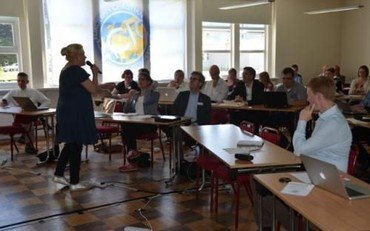
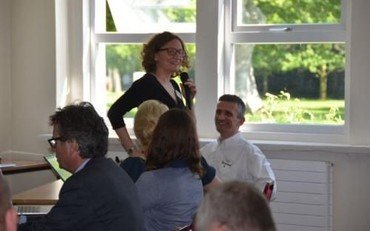

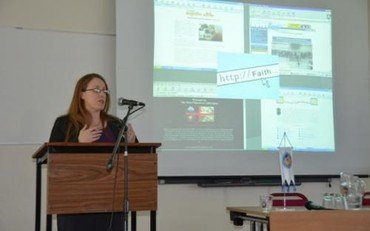
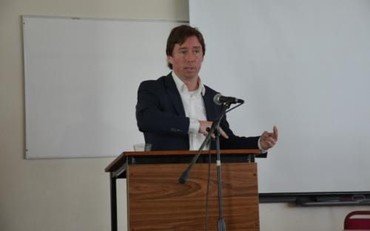
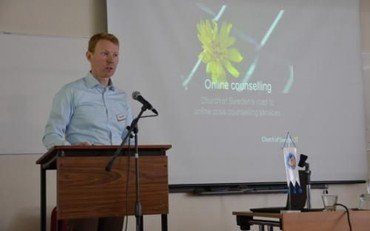

Current challenges of social media
Submitted by andersorsander on Wed, 06/05/2013 - 19:13
What are the current challenges of social media? A group of people from six different countries (Belgium, Denmark, Finland, Ireland, Sweden and Switzerland) shared the issues we're dealing with. As we shared the group nodded in recognition of the current challenges all of us are facing. Here are some highlights.
Reliance on one person
Many parishes rely on one enthusiast, rather than having social media as an integrated part of the church communication and ministry. If this is the case there's also a risk that purpose and strategy is unclear.
Getting interaction
Communication in social media, especially the increasing mobile usage, is fast. Maybe it's only a like, a retweet or a short one word comment. It's a challenge to drive this engagement into deeper relations.
How we perceive social media
We used to think of digital and analogue being separate. We're transgressing into consider them two sides of the same coin. This challenges the idea of church happening in meat-space rather than something that also happens in the digital flesh.
Having presence on more than Facebook
Because of its size Facebook tends to be the one network a parish chooses to use, if it's using one social network. When many parishes think like this church gets a lot of representation on Facebook, while we miss many of the other big social networks.
What challenges do you see in your church? What's your thoughts on the ones above? Feel free to share in a comment.
Anders Orsander, information officer, Backa parish, Church of Sweden
Considering Trends Towards Networked Religion in Online and Offline Cultures
Submitted by Dan Bernspang on Wed, 06/05/2013 - 16:55
We had the opportunity to listen to Assoc Prof Heidi Campell (Texas A&M University). Her lecture was based on a article named: Identifying trends of how religion is practiced online highlights shifts in how people live religion offline.
She was talking about “Networked Religion”.
In old days people went to the parish closest to them, geographically. Later on people went to a church where they felt at home. Now people tend to moving around to different churches because everything is built on relations.
Heidi pointed out 5 characteristics for Networked Religion and se was also pointed out tensions and challenges to these characteristics.
1. Convergent Practice
Today we can se that there is a mix of religious symbols on different kind of websites. People also use a mix of metaphors and creates there own stories.
The tension is how to guide people that get there spiritual guidance from different sources and traditions. The challenge is to make people to stay, and not moving forward to other churches or religions.
2. Multi-site Reality
Religious spaces on Internet reflects peoples offline values. Some parishes are now building “Network congregations”. These networks can be located in an actual place but they can also be virtual. One church can have approximately 5 000 people attending a service in the church and at the same time 18 000 attending on Internet.
The tension is that offline contexts is no longer the primary source for spiritual knowledge and spiritual communities. The challenge is Integration and Convergence.
3. Networked Community
People can attend a church, but they also have relations on the Internet. Spiritual networks are today much bigger than a church.
For example in “Second Life” some people have started a church, and they wanted to be a part of the Anglican community.
The tension is that our ordinary parishes are challenged. People might want to be in an “Internet parish” and not in an ordinary one. The challenge is creating & mobilizing Networks; digital Tribalism.
4. Story Identity
Identity are constructed online. To blog has been an important tool to show your spiritually. But it’s also an important tool to get in contact with other people that share your views. Often these blogs is focusing on narrow questions and that means that when you reading them you get a narrow view of Christian faith.
The tension is that religious identity is flexible and outmost personal. This means that we get a wider explanation of what Christian faith is. The challenge is the remix and mashup meaning making.
5. Shifting Authority
Contributing to shifting conceptions and practice of authority. An example of this is the “confession app”. New ways of being church is emerging.
The tension is that traditional leaders and sources to religious influence might compete against new ones. The challenge is to build trust online and offline.
Summary
We need to reflect on trends towards “network individualism”. Society, parish or church is no longer authorities.
I’m living my life you are living yours, is a common way to think today. We need to reflect how this affects the church.
We also need to connect the offline and online in church. Otherwise we risk to be more marginalized.
I found this lecture very interested and I’m looking forward to read the book that Heidi is writing on this very important issue. If the church shall survive in the future, we must recognize these trends and embrace them.
Dan Bernspång, Vicar Backa parish, Church of Sweden.
Impressions from the meeting of the steering committee


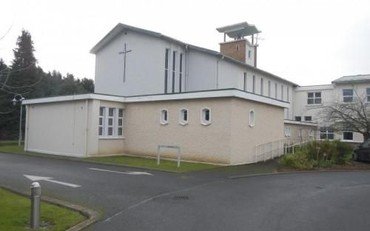


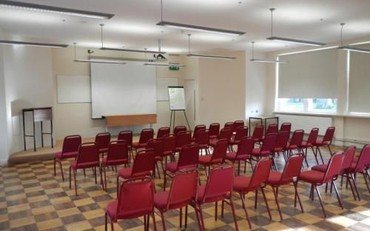

ECIC18 June 4 - 7, 2013 in Dublin
Submitted by Miklos.Geyer on Sat, 11/24/2012 - 14:37
ECIC18 will take place June 4-7 2013. Piaras Jackson will be the local organizer and the conference will be held at the Emmaus Centre in Dublin.
Mark your calendars and let the journey begin.
